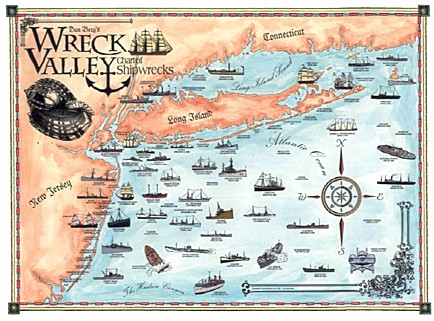 Captain
Kirby Kurkomelis
Captain
Kirby KurkomelisSite contents
![]()
seahuntdivers@aol.com email only
Scientific Diving Course General Introduction
Training will emphasize safety and education.
The Scientific Diving is a highly specialized for of scuba training and has been widely performed since 1952. It is to observe and study the underwater phenomena and to acquire scientific information, for Universities, Museum and other scientific organizations and specialized applications. The use of Scuba Diving has led to magnificent discovers in Marine Sciences, time and depth has been overcome by new and exiting techniques.
When placing a trained scientific eye underwater, the scientific divers is a skilled tool that will document all they see, the second way to obtain this information would be the use of a submersibles ( ROV remote operated vehicle).
The ROV can be used to make a visual observation and take accurate measurement at depths where the use of scuba ineffective, because of depth or other influences.
Scientific divers use a Varity of underwater tools such as taking a picture to document the underwater world using sensing equipment, scuba, submersibles, G.P.S., all well established land techniques to study the underwater world. The scientific diver time is measured in progress not minutes or hours.
Regardless of the role or project of the scientific diver and his team, you play a very important part in underwater research using scuba (compressed air) Maximum depth for this course is 30 fsw. All dives are made under the watchful eye of the Diving Safety Officer (DSO)
The Diving Safety Officer is responsible for the day to day implementation of all scientific dives, approves, monitors all diving projects and has final say! These tools will enable the scientific diver in understanding our oceans. Its organisms and dynamic process...
This course does not include Ice and Polar diving, Overhead environment, Hookah, Nitrox, Mixed gases, Surface Supplied air, Closed and Semi Closed Circuit Scuba (rebreather). Decompression Diving, Cold Water Diving, Saturation, Aquarium and potential Entanglement Diving.
Scientific Diving is defined by OSHA regulation (29cfr1910.402) as diving performed solely as a necessary part of scientific, research, or educational activity by employees whose sole purpose for diving is to perform scientific research task. Scientific diving does not include tasks associated with commercial diving such as: rigging, heavy objects underwater, and inspection of pipelines, construction, demolition, cutting or welding or the use of explosives.
Course Outline & Overview: Will be added at a future date
-

-
CAPTAIN KIRBY KURKOMELIS 516 398 2838



